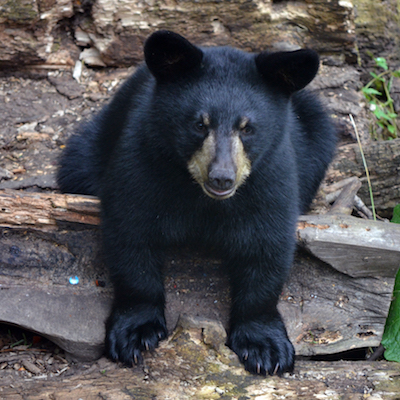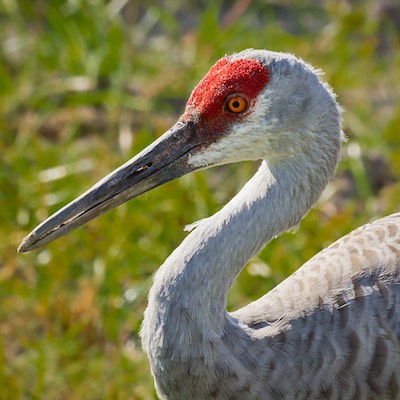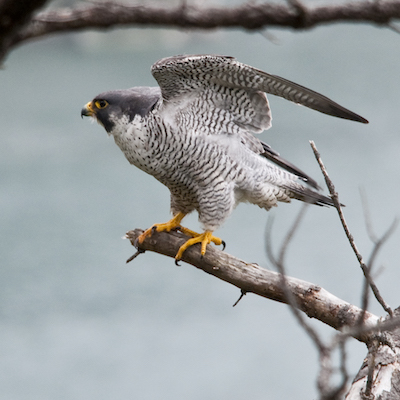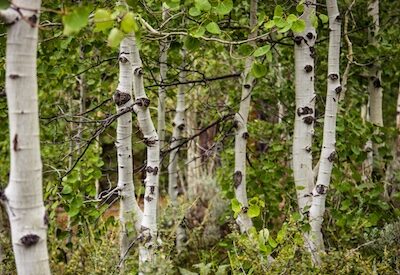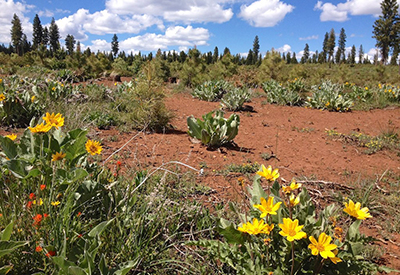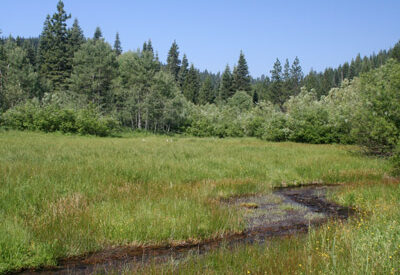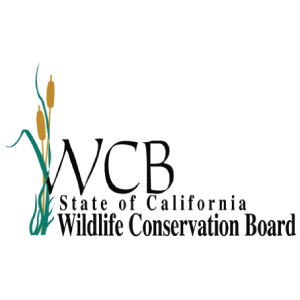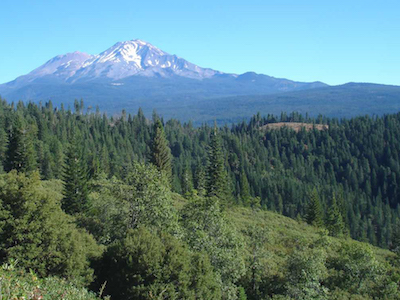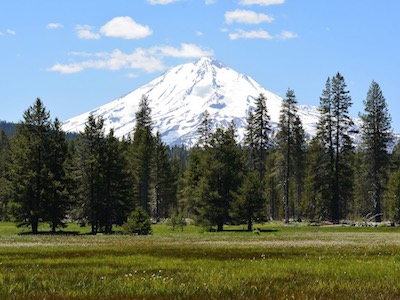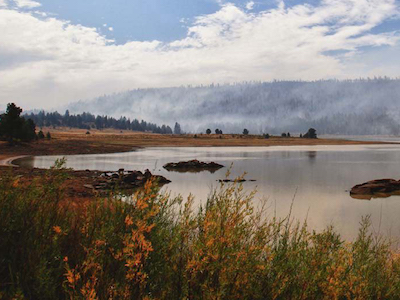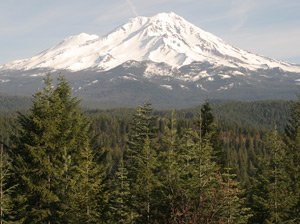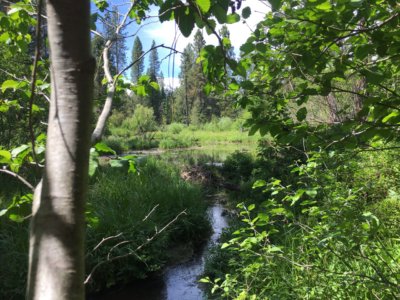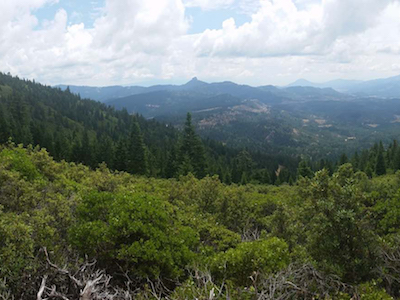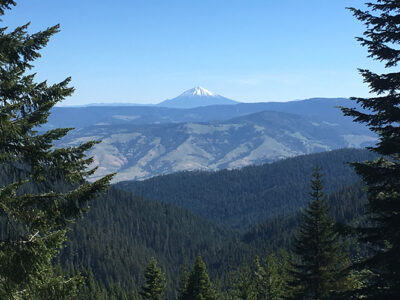Goose Lake
Restoration & Working Forest
Carefully balancing social, economic, and environmental virtues, Goose Lake Working Forest aims to conserve and revitalize an expansive landscape of rare habitats burned in 2012.
Goose Lake Working Forest, at the headwaters of the Pit River in the Klamath-Cascade, is the largest working forest conservation easement granted by a private commercial timber owner in the state of California. This 32,686-acre property, including approximately 10,000 acres of flourishing forest and meadow habitat, is surrounded on three sides by national forests. The conservation easement, generously donated by the landowners, will enhance the sustainable management of the property — connecting and enhancing diverse, rich habitats in perpetuity while continuing to provide cool, clean water, climate benefits, and jobs in California.
This unique joint conservation-restoration project takes place on the largest private property in Modoc County, California. The size of this easement is one thing; the magnitude of the planned restoration efforts is another, following a high-intensity wildfire that burned 68% of the property in 2012. Prior to the fire, the property provided a mosaic of diverse habitat types, teeming with wildlife.
“We needed to find a way to bring this landscape back to life and continue the Collins legacy of maintaining total forest ecosystems. This was a unique opportunity to replant a massive area and reshape it into the healthy forest it once was.”
– Eric Schooler, Collins CEO and President.
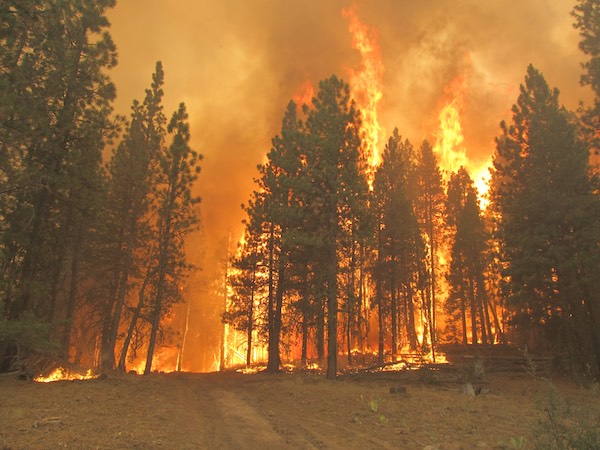
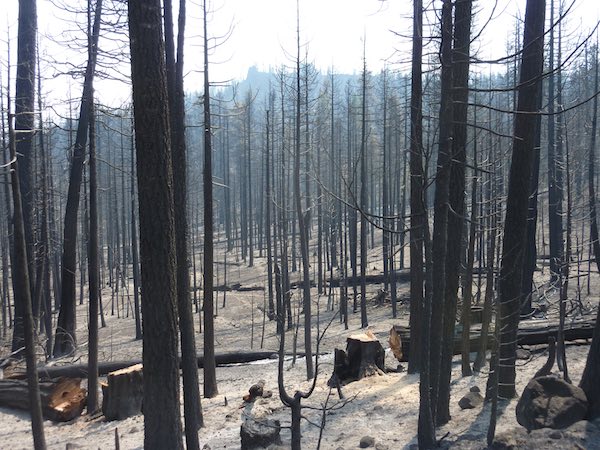
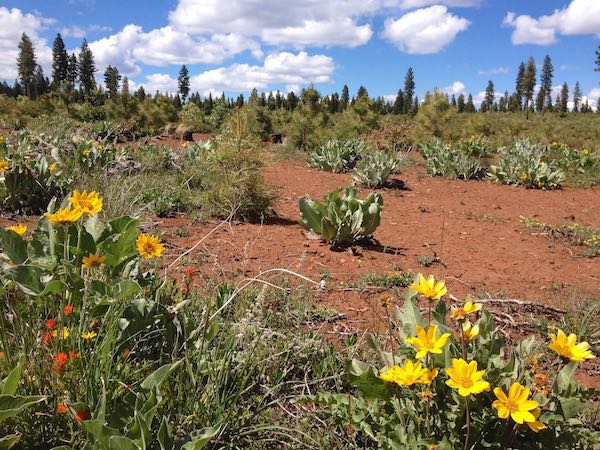
Thanks to a $2.5 million grant from the Wildlife Conservation Board and additional grants from CAL FIRE, the Sierra Nevada Conservancy, and the U.S. Fish and Wildlife Service, Pacific Forest Trust and Collins, working with the California Department of Fish and Wildlife and others, completed a two-year reforestation project to restore native habitats and replant 22,414 acres. Today, the land devastated by the 2008 Fletcher Fire and the 2012 Barry Point fire is now a nursery the size of Washington, D.C. growing three million ponderosa pine seedlings.
The goal of this long-term partnership is to restore and conserve the ecological functions of this vast property. After kick-starting the restoration effort with state funding matched by Collins, the landowners will sustain the 60 – 80 year restoration project through proceeds from timber management. The terms of the conservation easement guarantee the public benefits will be secure as the landowners have committed to care for the property’s native forest ecosystems and meadows, limit future development, preserve the scenic viewshed, protect and enhance wildlife habitat, and improve water quality.
Connecting a Larger Forest Landscape
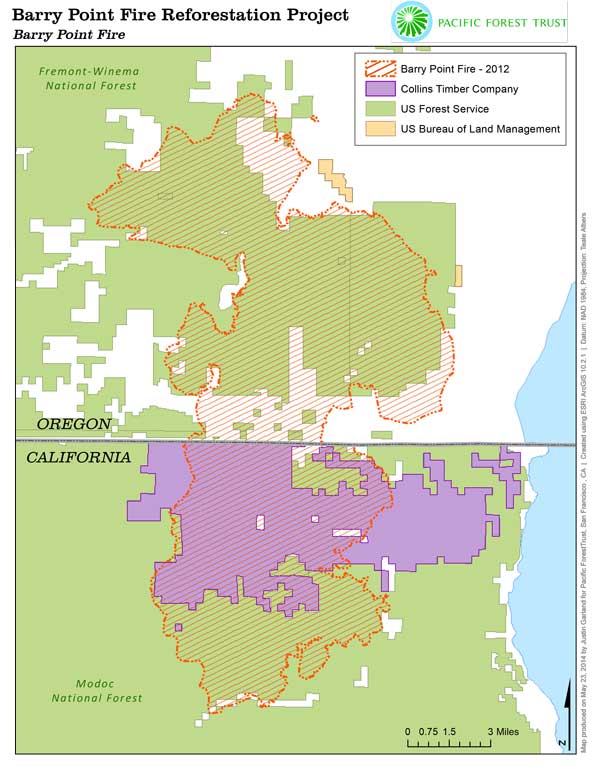
Largely a single, unfragmented block, undeveloped except for road systems, the property provides significant landscape connections for wildlife on the Modoc Plateau between the Modoc National Forest, Fremont-Winema National Forest and Goose Lake. Replanting and restoration on this private property complements restoration efforts happening on adjacent public lands.
Nestled within the Pacific Flyway, it also serves as a stopover and nesting site for a number of migratory birds. The conservation of the property enhances the network of five state and national wildlife refuges within the vicinity.
Who Lives There?
The seamless connection of this property with neighboring, protected state and federal lands, along with diverse habitat types is rare and has been identified by the California Wildlife Action Plan as a unique habitat complex deserving additional protection. Restoration and conservation of Goose Lake Working Forest will enhance habitat for imperiled species such as great grey owls (California’s northern-most population), greater Sandhill crane, goshawk, bald eagle and black-backed woodpecker; as well as 25 rare plants. Megafauna include black bear and mountain lion. Herds of Rocky Mountain elk, Rocky Mountain mule deer and pronghorn antelope are also resident or migrate through the property between the national forests. The streams and springs provide cool water flows for short-nosed sucker, Modoc sucker and red-band trout.

